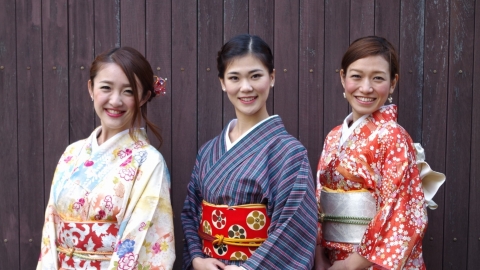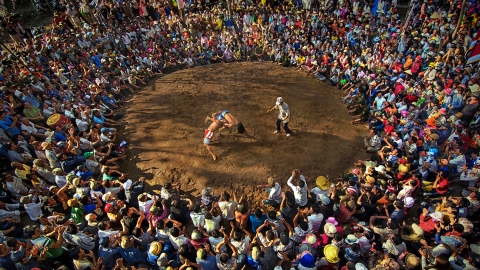
Bali has surpassed more than 17,000 islands in Indonesia, a country of thousands of islands, to become a world-famous tourist paradise with its unique "individuality". While Islam is strongly developed throughout the country, Bali is the only island where 90% of the population is Hindu. This is clearly shown in daily life and in the way of worship.
Melasti: Purification Ritual on the eve of the New Year
Melasti is a series of rituals held over three days before “Nyepi Day” – the Balinese New Year. The purpose of the festival is to purify the human soul and the statue of the gods from impurities and sins.
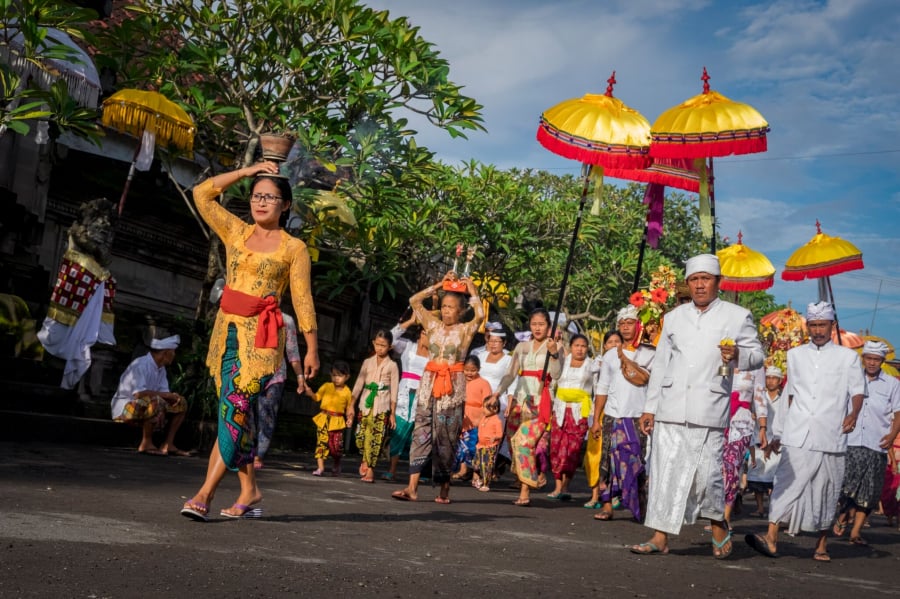
In Balinese belief, the universe (Bhuwana Agung) and the human soul (Bhuwana Alit) exist within each other, and natural water sources, such as streams, seas, and lakes, are the “source of life” (Tirta Amerta), so celebrating Mass next to a water source can help purify both the soul and the surrounding world, bringing purity from the source of life “Tirta Amerta”.
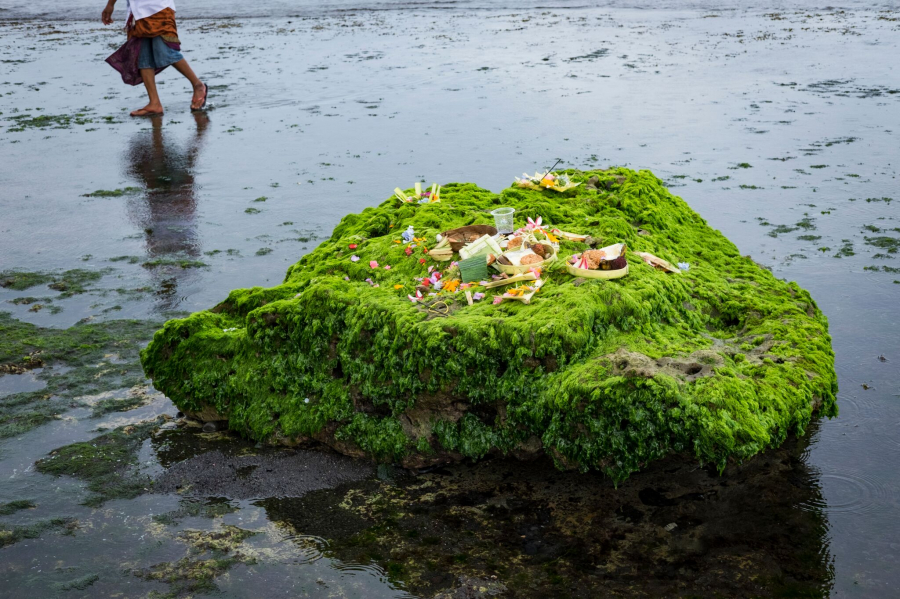
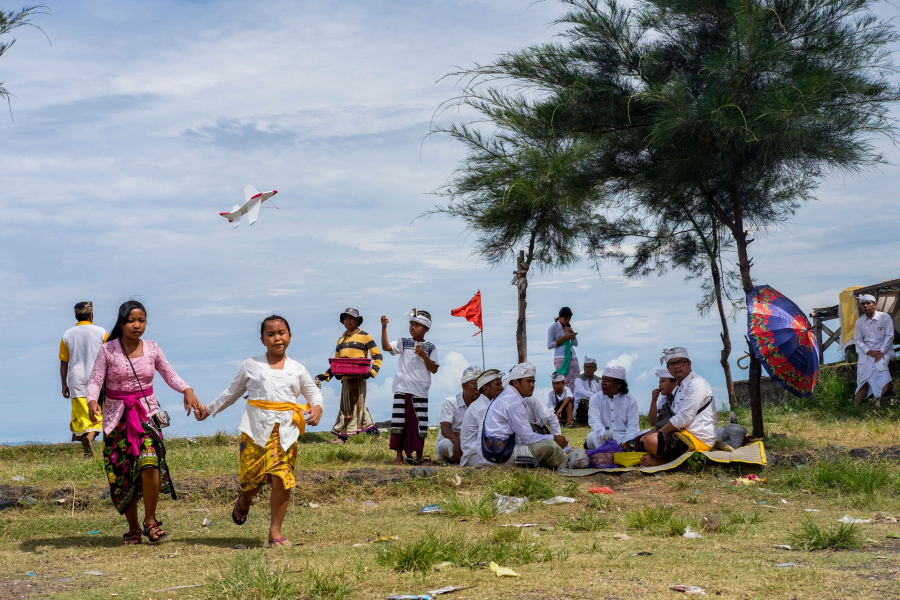
On the day of the festival, each villager dresses up in their best traditional white clothes, brings offerings, and gathers at their village Banjar to pick up their idol (“pratima”), and parades it to a larger Banjar in the area. All the idols of the villages will be gathered here for worship before being taken to the water source.
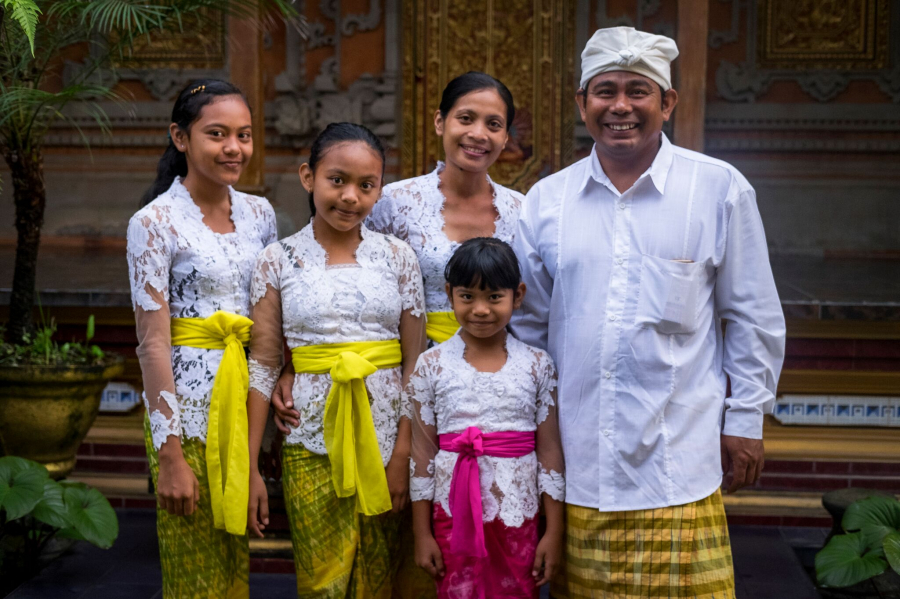
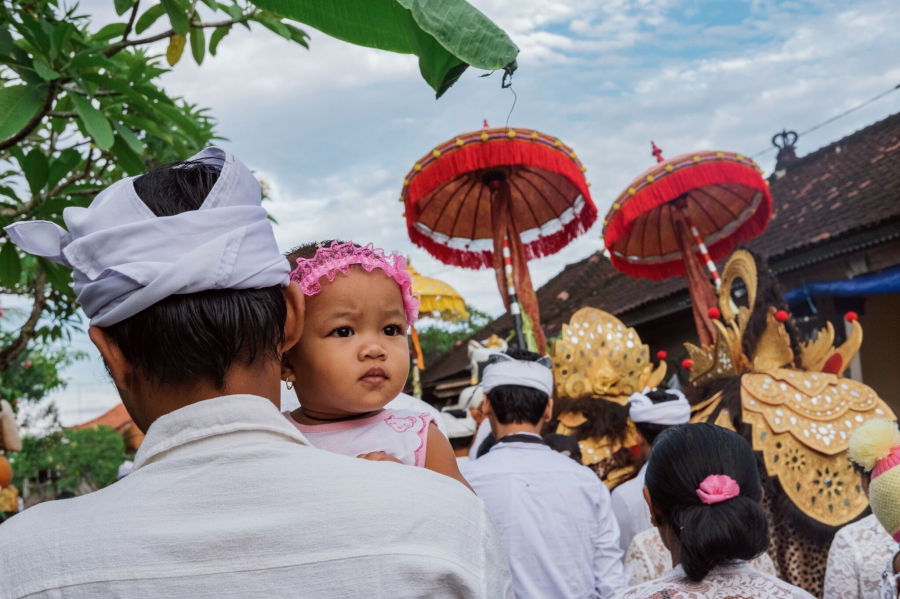
As scheduled, maybe in the afternoon of the same day or the next morning, everyone once again brought all the statues together and marched to the water source, which was the beach, to perform the most important purification ritual. Until now, we still remember the bustling feeling of the festival, the waves of people in traditional white clothes, the colorful Umbul Umbul flags fluttering in the strong sea breeze and the sacred sounds from the gongs, or from the prayers of the marchers.
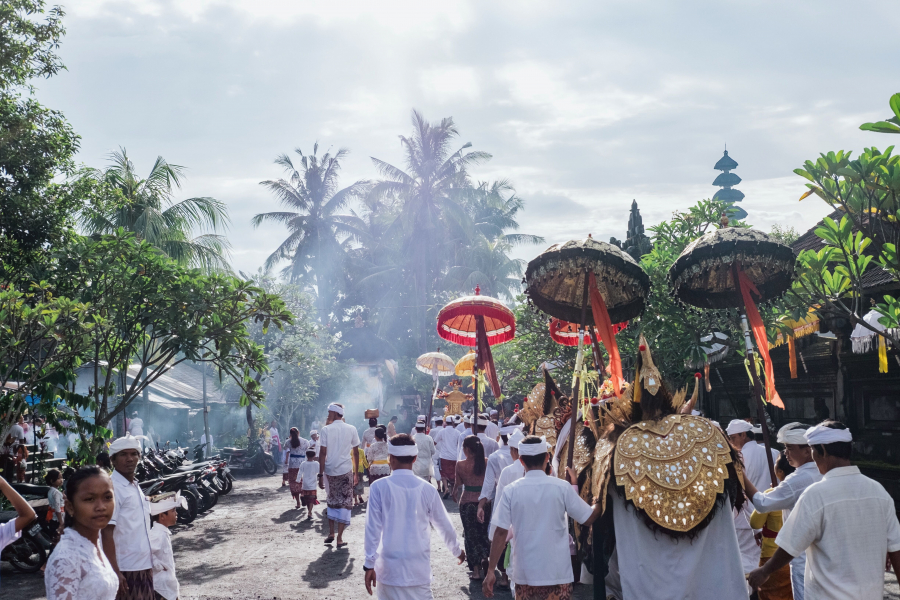
For them, this is not just a traditional ceremony, but a belief, a great faith that is nurtured from the time people are still red-faced until their hair turns white. Before going, we also read the information and learned a little, but only when we come here to "see" can we fully feel the solemnity and sacredness of the festival to the lives of local people.
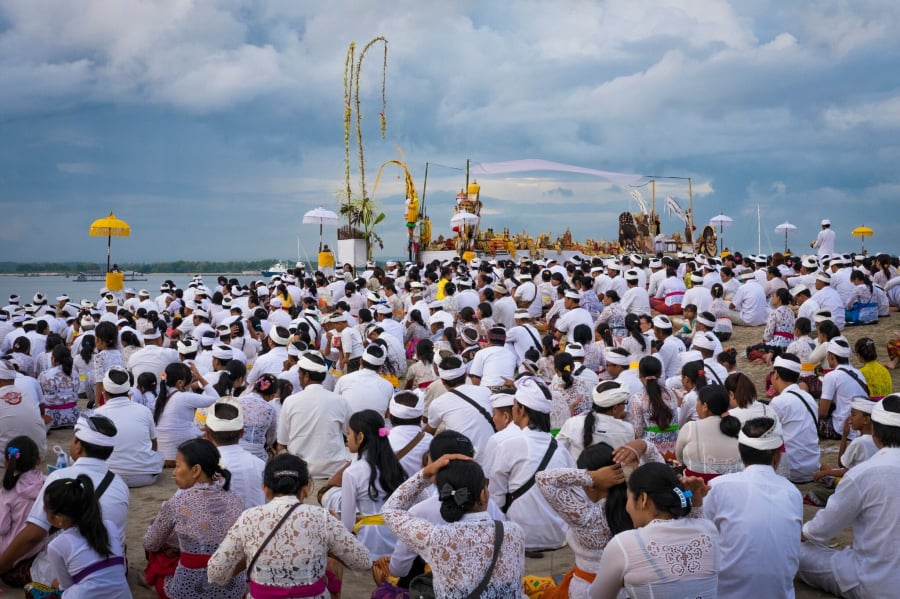
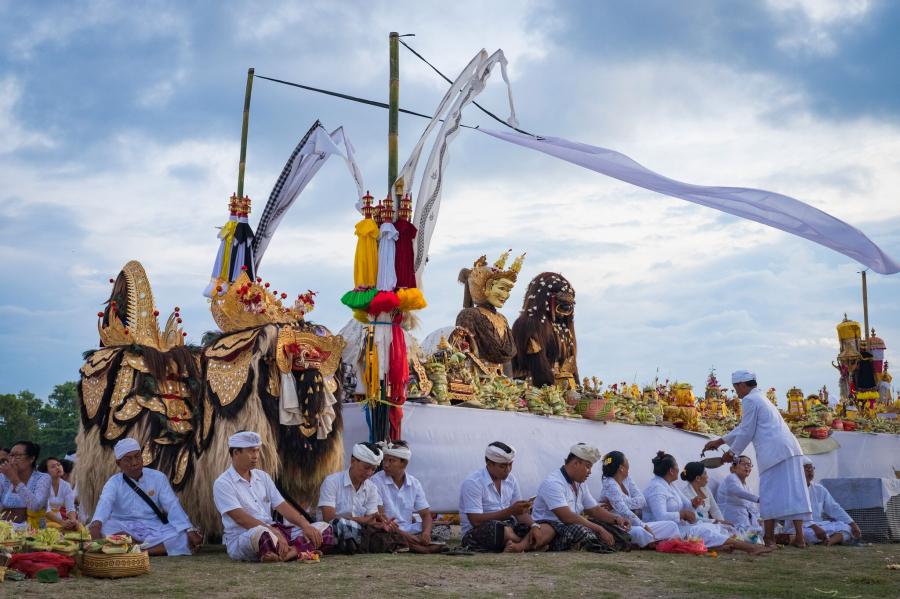


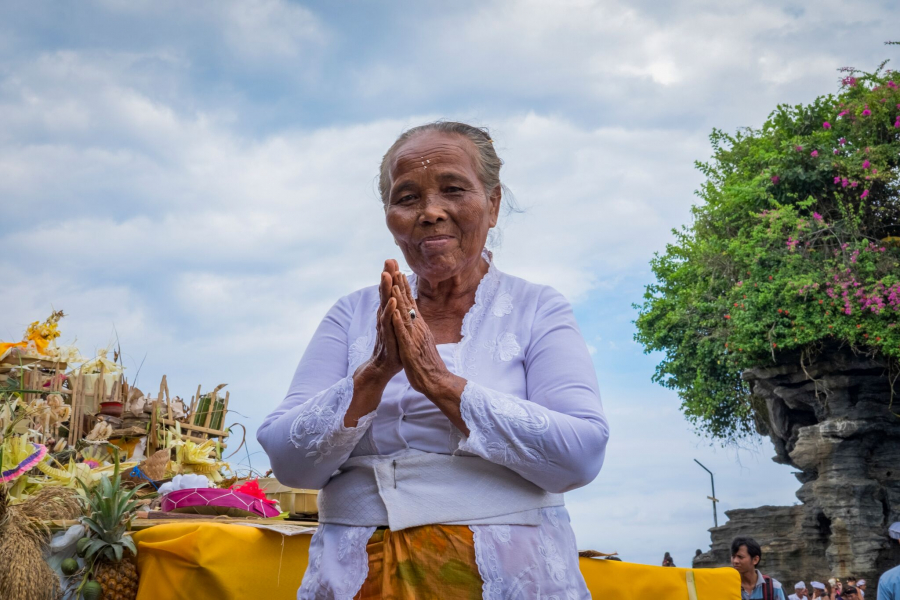
Each region and each village will have a different way of performing the ritual, but according to our observations, there are still common points. Throughout the ritual, people take turns going to the sea, bringing offerings, praying and then collecting water to bring back. The altar will be placed near the water source, and everyone sits facing it to pray with the “master”.
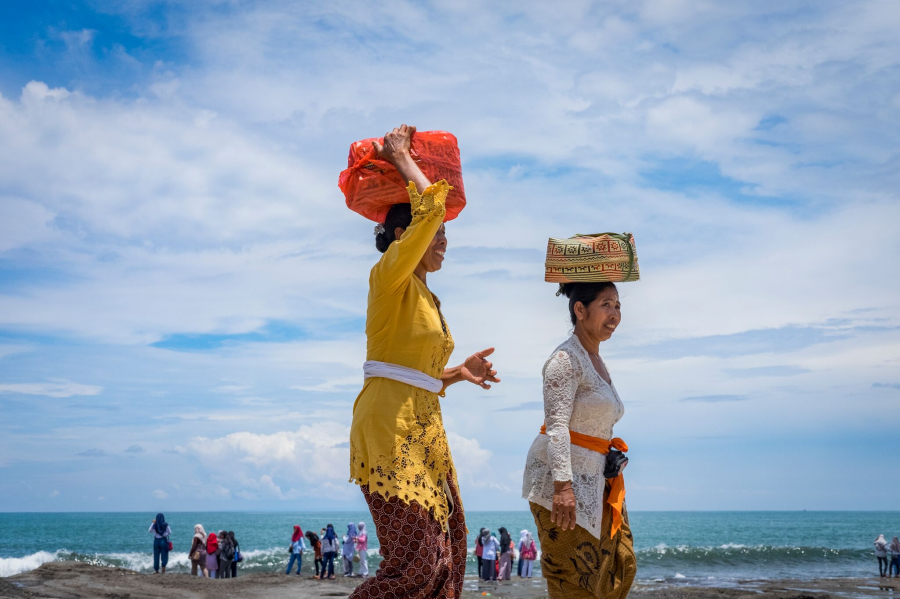

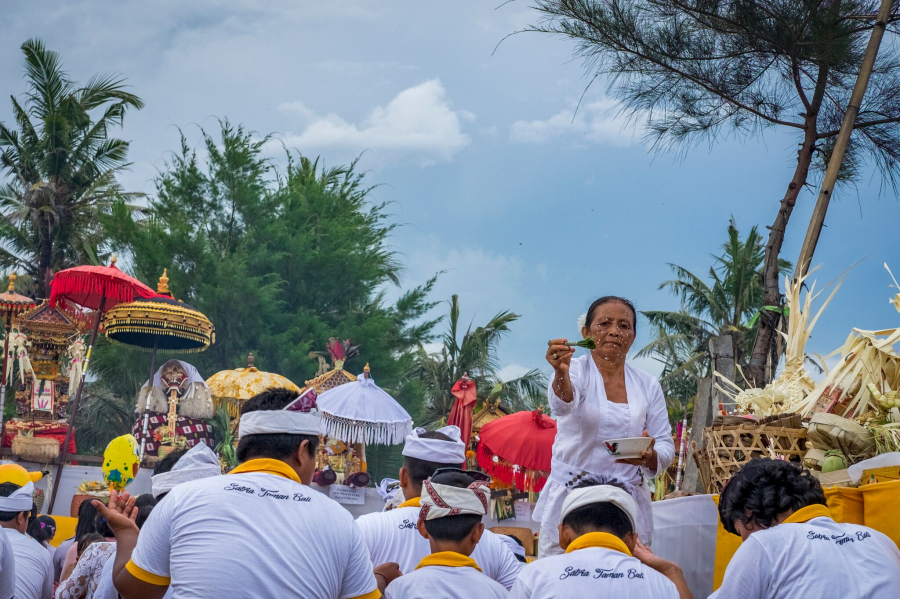
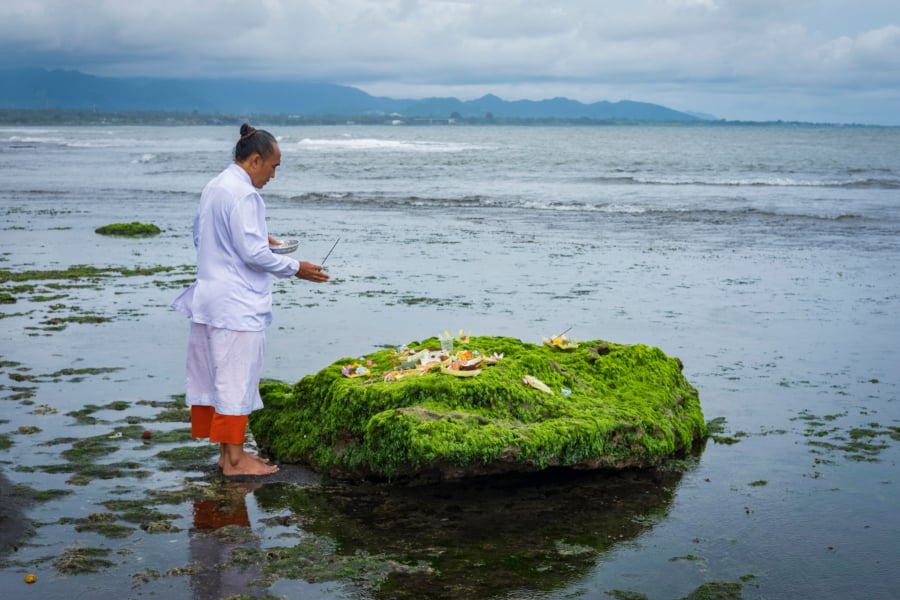
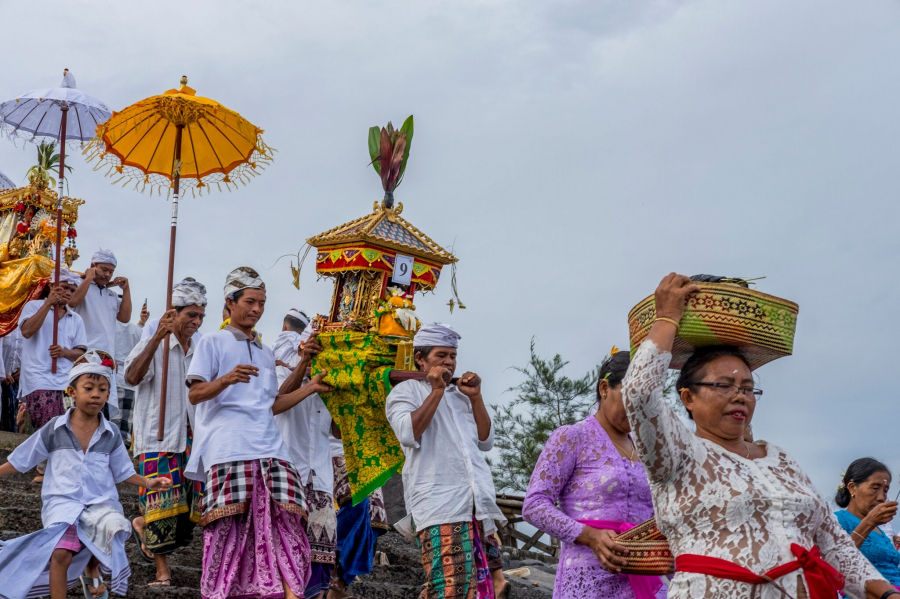
Representatives from each village will go together to the water source to collect water to purify the “pratima”, then they will use flowers to sprinkle water on the villagers. At the end of the ceremony, everyone will march to the sea again, carrying the idol, and collect water to bring back the purity from the “source of life”. The Pratima will once again gather at the main temple to keep it in the most sacred place.
Ngrupuk Ceremony - “Ogoh-ogoh” Monster Parade on New Year's Eve
According to locals, Ogoh-ogoh comes from the pronunciation of the word “ogah-ogah” – which means “shake hard” in Balinese, literally describing their ritual of parading monsters through the streets.
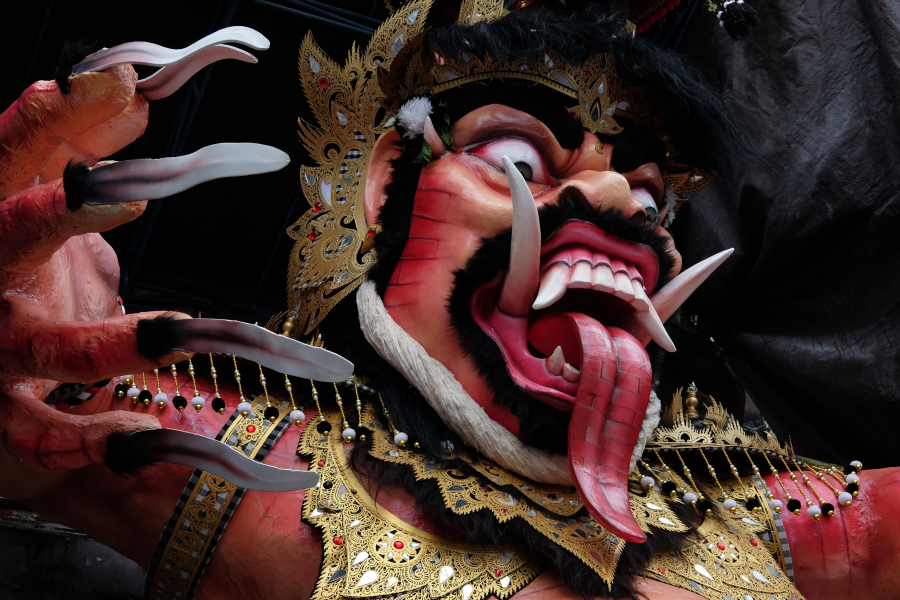
The “ogoh ogoh” are often created in the shape of “Buhta Kala” which are evil spirits, Rakshasa (in Vietnamese, “La Sat”), or animals that disturb human life. In addition, sometimes people also use the image of legendary monsters such as dragons, Garuda birds or gods in Hindu religion to build models. We also saw some villages build statues of the elephant god Ganesha, son of Shiva. People believe that all evil things will be absorbed into the Ogoh-ogoh, to restore purity to the entire island of Bali.
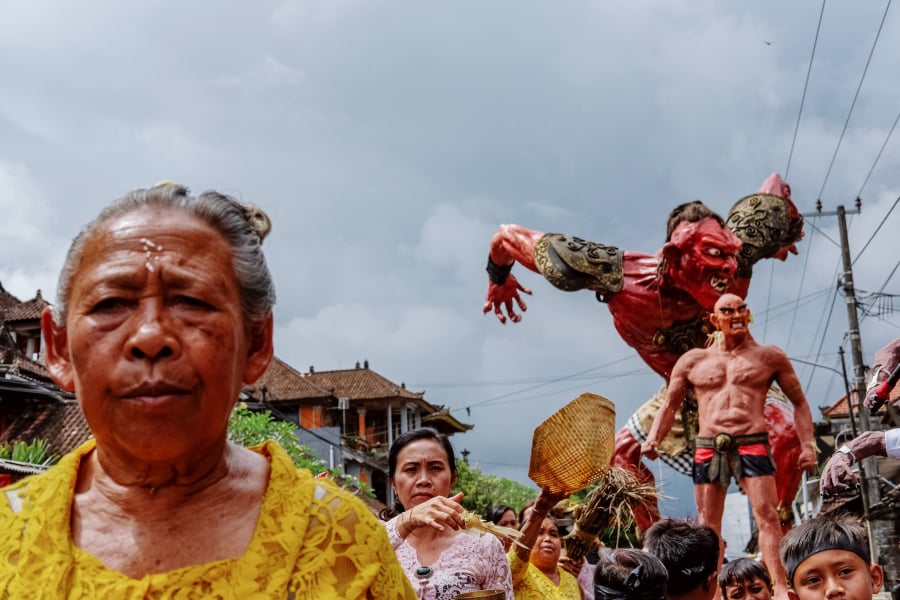


Every year, about 1-2 months before the New Year, each village must come up with ideas and work together to make “ogoh-ogoh” out of paper pulp, bamboo and other light materials that can be easily moved. The scale will depend on each village’s budget. Some villages make tiny ones, others build large statues that are several stories high. It is not surprising that some monsters cost up to 1,000 USD in total, including food subsidies for those involved.
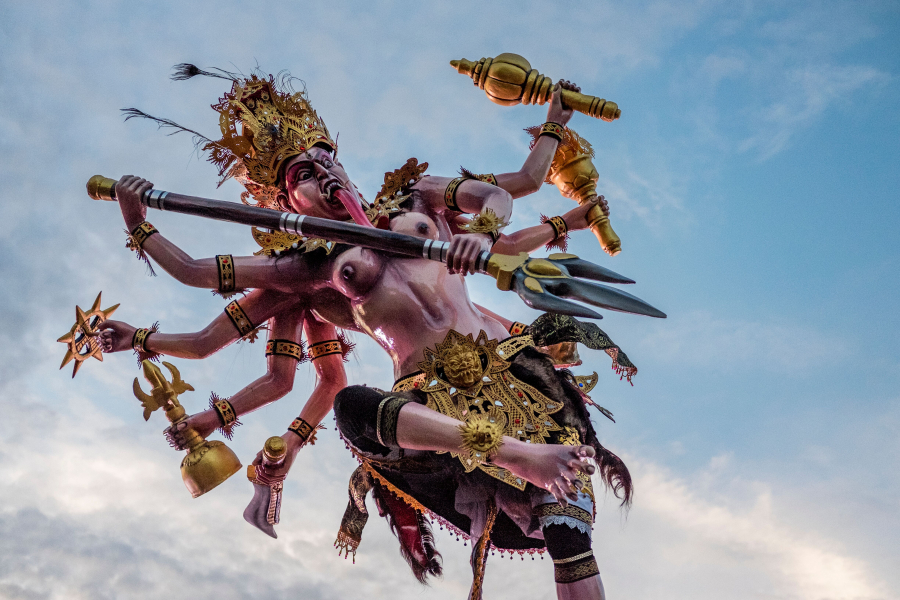

The parade will take place on New Year’s Eve, the day before Nyepi. The biggest venues are in Depansar and Ubud – the art center of Bali, where it is held very solemnly. This time we participated in Ubud. Next time we will try Depansar because this is the “origin” of this festival. There is also a competition between Banjar (villages) to choose the most beautiful Ogoh-ogoh with the most impressive performance to perform on Ngrupuk night.
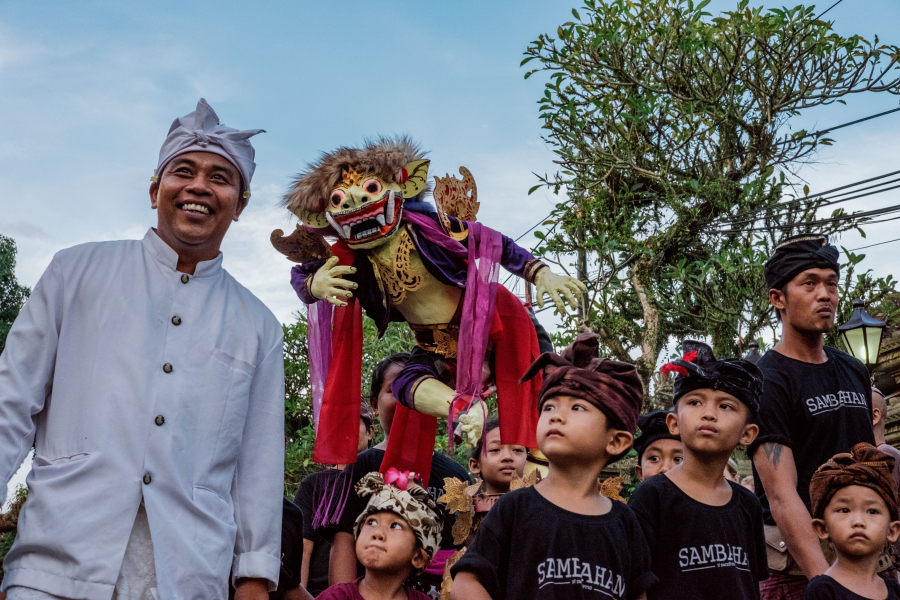
At around 7pm when the sun begins to set, the sounds of trumpets, drums, gongs and cymbals resound, the Ogoh-Ogoh will be carried into the center of Ubud, passing through the Ubud market, to the "Ubud Palace" intersection and turn to gather at the Ubud football field. Then from this football field, they will be paraded back to the palace intersection and performed. Each banjar brings a scene about the story of the Ogoh-ogoh they made. Although we do not understand the language, we cannot take our eyes off the gestures and movements of the actors and listen to the melodies and songs from the children. Most of the villages perform battles between the two forces of Good and Evil. The Ogoh-ogoh blend with light, smoke, sometimes fire, and the fierce sounds from the young men carrying the statues each time they lift them up and rotate at the intersection. They fight fiercely, the audience cheers. There was a village full of people shaking the ogoh ogoh so hard that their heads flew off. Then they cheered for the good that had defeated evil, bringing peace to the people.
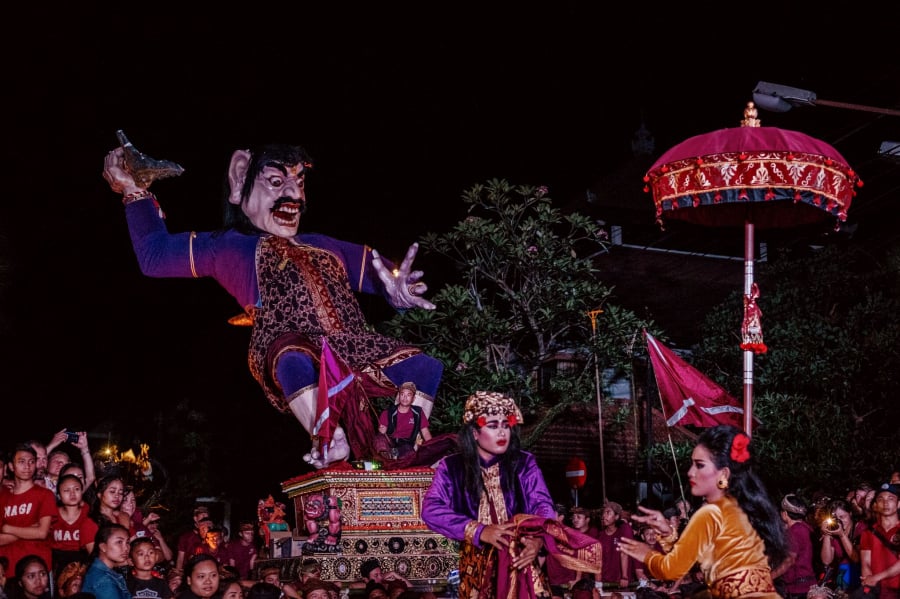
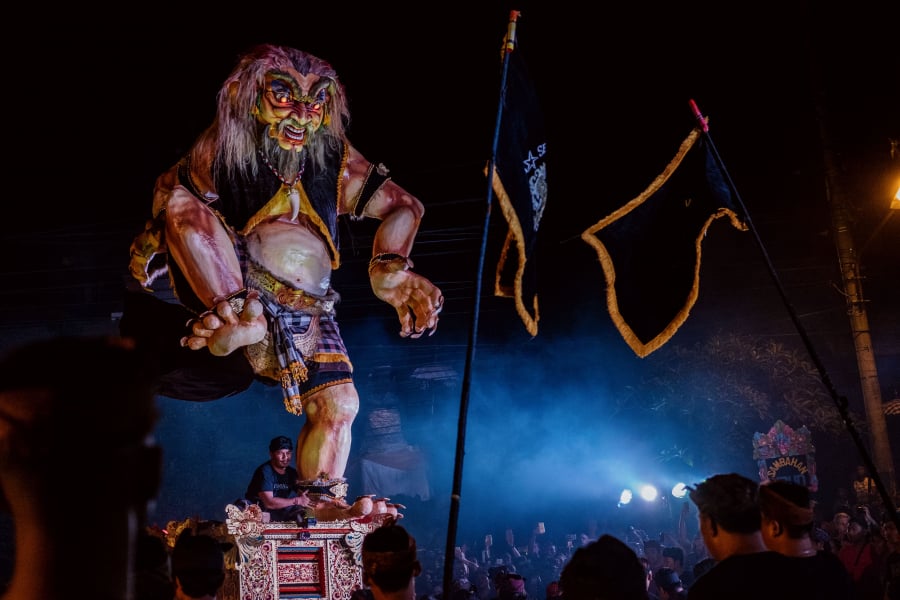
The festive atmosphere continues until midnight. The “ogoh-ogoh” are brought back to the village, where they are burned to expel evil spirits from the lives of the gentle Balinese. But these days, people keep the statues for decoration or sell them because they are quite expensive. It is rumored that Canadian-American director James Cameron attended the festival and bought many Ogoh-ogoh statues for his own use, and to inspire his famous “Avatar” characters.
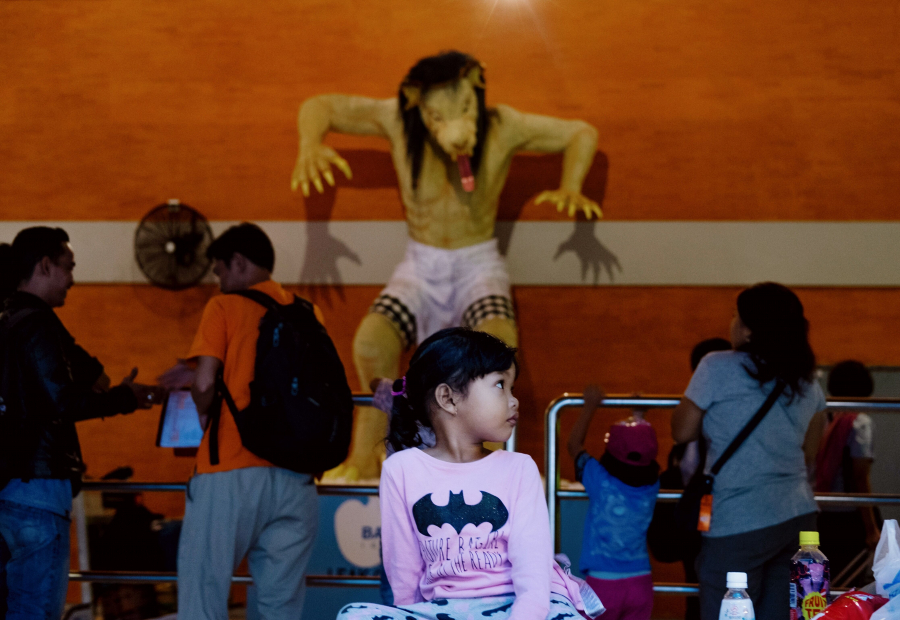
Day of Silence “Nyepi”
If you are attending the festival in Bali on this day, please note the following *DO NOT* within 24 hours (6am on Nyepi day until 6am the following day):

Points to note during Nyepi ceremony:
- DO NOT go out. All residents and tourists must strictly comply with this request. You cannot check out of the hotel that day. Pecalang (community police) will be out on the streets and check regularly.
- DO NOT make noise. Even if you are in the hotel, you are not allowed to joke around too loudly. Or run around in the hotel grounds.
- NO shops or restaurants are open on this day, even in hotels, everything is completely basic, or even no food service. You should also check in advance and prepare yourself. Note that convenience stores on New Year's Eve will be very crowded and close at 10 pm, you should buy in advance.
- NO transportation. Even the airport will be closed for 24 hours. No motor vehicles will be allowed on the entire island of Bali and its sister islands, such as Nusa Pendia.
- NO Internet. First of all, 3G and 4G are blocked by the government. Whether or not there is wifi depends on the hotel/area you stay in. For example, where we stayed, there was absolutely no internet at all!

According to tradition, this is the day when Balinese people think about what has happened in the past year. Meditation is the main activity of 24 hours of Nyepi. After Ngrupuk New Year's Eve, as we mentioned above, people will burn the "ogoh-ogoh" statues to destroy the evil spirits, but it is believed that they will not die completely, but will return to the village on New Year's Day. Therefore, people will not leave their houses, nor make noise, and use electrical appliances. When the evil spirit comes, it will not find any life in the village, will think that this is a dead village and fly away to another place, leaving a peaceful and beautiful Bali.
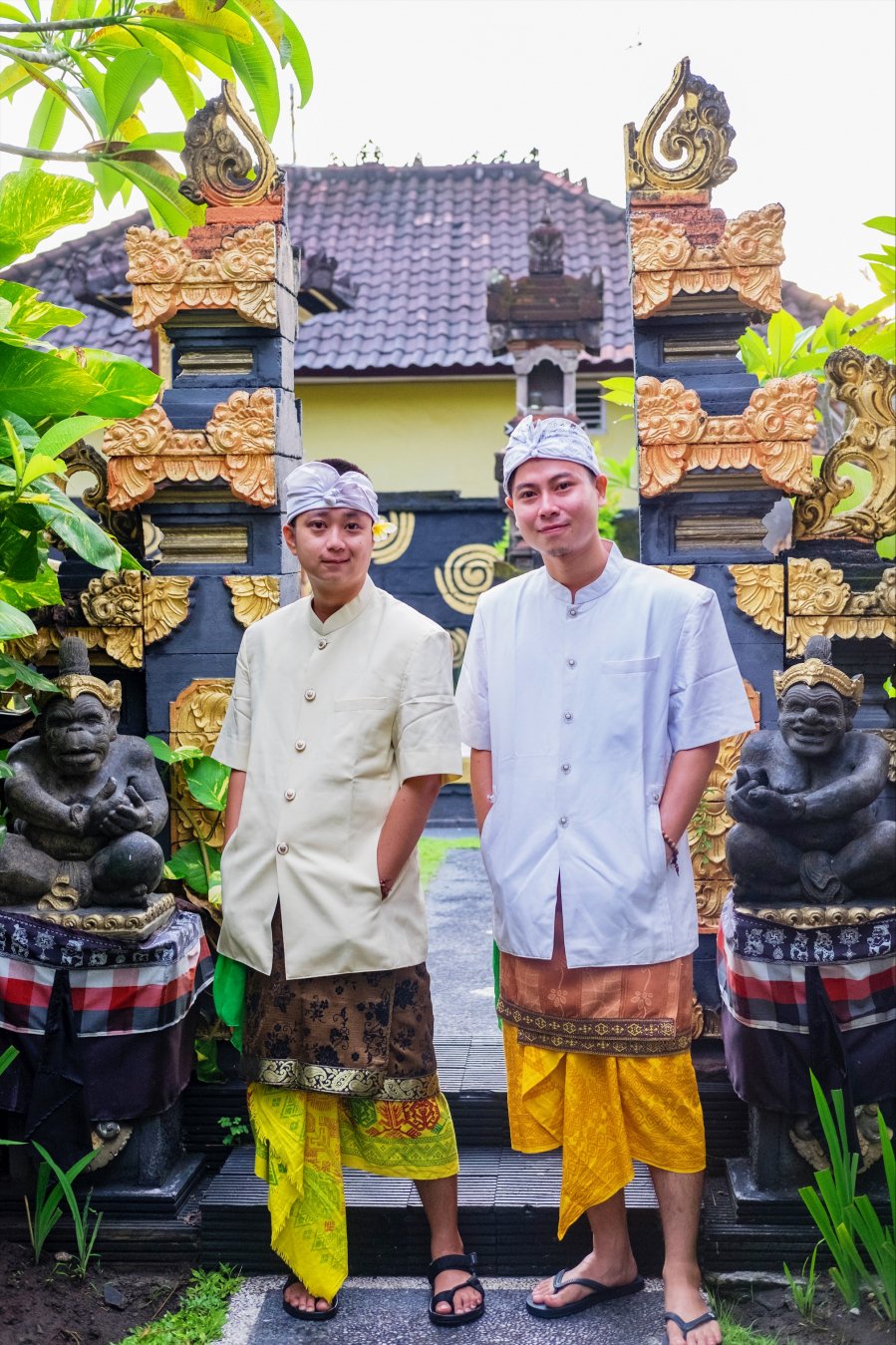
Portrait of the duo Wanderful Dreamers - Duc Tran & Quan Doan
Melasti and Nyepi are celebrated according to the Hindu calendar, so they change every year. This year, according to the Saka calendar, Melasti will be celebrated on March 4-6, 2019, and Nyepi will take place from 6am on March 7, 2019 to 6am on March 8, 2019. Come to Bali to “eat lightly - talk softly - smile charmingly” and learn more about this unique culture!
And finally, please enjoy the impressive video made by Wanderlust Dreamers themselves about this unique festival.
About Wanderlust Dreamers:
- Duck Tran (Duc Tran) moved from Hanoi to Saigon 10 years ago and is currently working in graphic design, filmmaking and photography. After deciding to quit his full-time job, Duc is pursuing his passion for travel to record stories about people and places he has been through through images and films. The simple things from people and life always inspire Duc. Fluent in English and learning Japanese. Instagram: @ducktran27
- Ted Doan (Quan Doan) lives in Saigon and has been working in the field of Labor Human Rights for more than 5 years. Quan is passionate about work related to human and environmental protection and cultural understanding. With a very good memory and calculation ability, Quan can plan, manage expenses and share detailed experiences about trips. Graduated with a major in English and can speak basic Chinese. Instagram: @tedhuahua
- Website:https://www.wanderfuldreamers.com

























